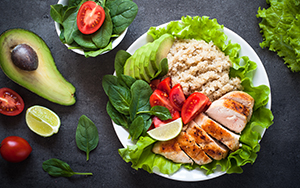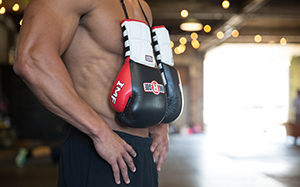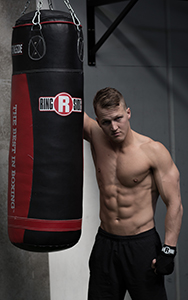Movies, TV, and countless training montages have taught us that a fighter’s diet needs to be highly specialized to be effective.

In reality, a fighter’s nutrition plan has a lot in common with your basic “sensible diet”. It only varies in how much you eat and how often.
In this blog, we lay out our guide for a proper fighter’s diet. This will help you to not only get through your training, but get the most from it.
A fighter’s diet starts with the same building blocks of a good diet that we all should use. From there, a fighter will alter their nutrition plan based on training goals, personal preference, workout schedule, and weight class considerations.
The Basics of a Healthy Diet
A good diet for a fighter, or anyone really, begins with a few simple notions.

- Eat the right amount: You need to eat enough to meet your daily energy needs, but not so much that you convert unused energy into fat.
- Eat a balanced diet: Throughout the day, your diet should include a good balance of all of the major macronutrients: protein, carbohydrates, fat, and water.
- Eat a variety of foods: Foods have different micronutrients (like vitamins and minerals) that can be hard to get from other sources. Varying your diet throughout the week helps ensure you don’t miss out on anything critical.
That simple plan should be enough to develop a personalized diet for any fighter. But it may not provide enough detail and direction, especially with so much conflicting information out there.
How Much Should You Eat?
Eating food supplies the human body with the energy needed to function. At a basic level, we need to eat just enough to make it through the day. For most folks, this means consuming around 1800 to 2400 calories per day. Adding in activities like strength training or running, will up your calorie requirements.
There are a several calculators online that can help you determine how many calories you burn in a day. And it’s a good idea to keep track of what you eat, so you can develop a good sense of how many calories you’re consuming.
Balancing the Macros
Despite what you may have heard, you shouldn’t try to eliminate or significantly reduce protein, carbs, or fat in your diet for an extended period. Each plays a major role in your body’s proper function.

Instead, you want to make sure you’re getting a balanced amount of all three throughout the day. Current thinking puts the proper balance as follows:
- Carbs: 45-65%
- Protein: 15-35%
- Fat: 20-35%
You will want to adjust this balance based on your needs.
And don’t forget water. Keeping up your water consumption throughout the day will ensure that you don’t get tired during a workout.
Vary Your Consumption
In order to make sure that you get a well-balanced diet, your daily food intake should include a variety of nutritional options.
For protein, you should look to lean meats (chicken, turkey, grass-fed & finished beef), seafood (fish and shellfish that are low in mercury), and plant based options (soy beans, nuts, chickpeas, lentils).
For carbohydrates you want to include both starchy foods like whole grains, brown rice, and potatoes, as well as other non starchy vegetables like broccoli, spinach, and peppers. Try to avoid simple sugars, highly processed foods, and other high-glycemic “bad carbs”.
Fat will likely be included as a part of your meal in some form. Most animal-based foods have fat included. There are also lots of plants that include good kinds of fat, like avocados and nuts. You can also add fat in by choosing to cook or make sauces with good fats like olive or coconut oil.
Sign up for our Email Newsletter
Learn about all of our great deals and get alerts when we post new content like this.
Optimizing Diet for Your Training Plan
Now that we’ve covered the basics of building a nutrition plan, let’s talk about how a fighter’s diet will need to modify it.
A Boxer’s Diet Needs Variety

You’re caloric needs will vary considerably depending on your training goals, your workout schedule, and your competition schedule. It will be difficult to set up a single basic diet that will always meet your needs.
If you are focused on building muscle, you will likely need to increase your protein intake. An intense training session will demand more calories than a recovery day. Making weight for a fight needs a different nutrition plan than a regular training day.
At the end of the day, your training plan and your nutrition plan are linked. So develop them together.
Meal Timing for Boxer’s In Training
Arrange your meals around your training schedule.
Your biggest meal should be about two hours before your training. This ensures that you have all of the energy and nutrients you need when your workout begins. If it’s a particularly intense workout, then you may need to have snack right before you get started. Otherwise, you don’t need to eat again until your recovery meal.

Your recovery meal is one of your other bigger meals for the day. You should eat something that replaces energy burned in your workout.
Breakfast will be the only other “big” meal you might have. Eating well in the morning forms a good base for what comes later and keeps you from feeling hungry before your next meal time.
You should aim to eat about every three hours, with small snacks filling out the rest of your nutrition schedule. This ensures a steady stream of energy throughout the day. It will also help to keep hunger from building, which will limit the risk of overrating.
As with many things, you are the best judge of what’s right for you. The fighter diet that works for one person, may not work for another. You must adjust based on your needs and your personal preferences.


Very Good Review